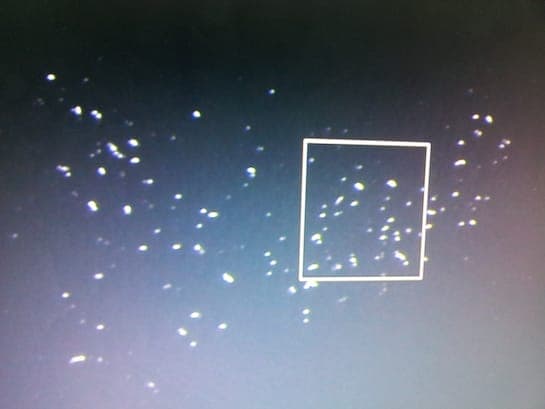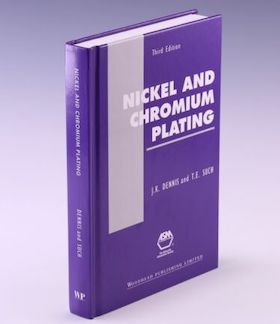
Curated with aloha by
Ted Mooney, P.E. RET

The authoritative public forum
for Metal Finishing 1989-2025

-----
Spotting problem in nickel-chrome plating
2007
Q. Dear All,
I am facing problems in plating spots.
They are tiny white after chrome plating, which can't be removed completely in buffing.
We expect that these are due to algae from water rinses.
Is that correct?
Kindly let me know
Thanks in Advance.
plating process supplier - Bangalore, India
A. Hello, Aurobind. It is hard to guess whether you have algae in your rinsewater. But a final rinse in DI water is pretty much a standard idea for decorative chrome. Is your final rinse DI water, and if it is not, is there a reason it can't be?

Ted Mooney, P.E.
Striving to live Aloha
finishing.com - Pine Beach, New Jersey
2007
Q. Dear Mr Ted,
Thank you for your reply.
We are using DI water as the final water rinse before Semi Bright and also between further platings. Even I am not sure that is algae, because the pH values are out of range for algae growth.
Kindly clarify me
Thanks in advance.
plating process supplier - Bangalore, India
2007
A. Although molds and algaes can grow in plating rinse waters I am not personally familiar with them in chromium rinses, possibly because of the oxidizing potential and toxicity of chrome. If you are able to photograph the stains in question, perhaps some of our readers who are experienced chrome platers will volunteer their opinions.

Ted Mooney, P.E.
Striving to live Aloha
finishing.com - Pine Beach, New Jersey
2007
Q. Dear Mr Ted,
Thank you for you suggestion.
We are using only DI water as final water rinses before all plating of conductivity <10 microS. I too agree that the pH ranges are not suitable for algae growth. But we when ever get that spot problem, we observed that the tank walls are slippery. Once we clean the tank walls with Sodium hypo chloride the problem is solved. Hence we suspect algae. Kindly clarify.
Best Regards
plating process supplier - Bangalore, India
2007
A. You may have a problem trapping gas bubbles during nickel activation prior to chrome. If so, you either need more amps, or some agitation. Under the bubble, if it is not released is unactivated nickel, which means you are more than likely white washing.
Also, check your ratio.
Warren, Michigan, USA
2007
A. Dear
I have seen algae and spots due to it. One can see it under microscope very well. We started cleaning our storage tanks regularly and we installed 5 micron filters in DM line which solved problem. ( somewhere we had installed UV lamps around pipe too ) Regular cleaning of tank (preferably tank with tiles and not plastic tank ) was better.
Also measure silicate in DM water. It can also cause spot. keep level of silicate < 1 ppm.
Good luck.
plating shop employee - Gandhinagar, India
2007
Q. Dear All,
What can you suggest as the basic reason for peel off.
We are doing Semi Bright, Bright and Hard chrome. The problem of nickel passivation is avoided. Sometimes we get like blisters. Sometimes we get the entire pipe of about 1 foot length peeled off.
Kindly let me know whether I have to provide more details. Thanks in advance.
plating process supplier - Bangalore, India
2007
by Robert K. Guffie

on AbeBooks
(rarely)
or eBay
(rarely)
or Amazon
(affil links)
A. The phrase "hard chrome" usually implies a certain thickness of the chrome deposit rather than a minimum hardness, Aurobind. Thicknesses that are measured in ten-thousandths of an inch or thousandths of an inch are called hard chrome, whereas thicknesses measured in millionths of an inch would not be considered hard chrome. Unless I am confused you are speaking of decorative chrome on top of duplex nickel.
This reason I mention it is because it would be hard to see peeling if the layer is only millionths of an inch thick. The question is at what layer the peeling is occurring -- between the two nickel layers, or from the substrate. You may be able to tell by applying a drop of copper sulphate ⇦ this on eBay or Amazon [affil links] and seeing if it immersion deposits under the blister.

Ted Mooney, P.E.
Striving to live Aloha
finishing.com - Pine Beach, New Jersey
Q. Dear Mr Ted,
Many thanks for your reply.
I tried acidified copper sulphate solution on the peel off.
Sorry we are plating hard chrome of thickness more that 10 microns. We observe peel off from all stages. If there is any peel off from the base we will make adjustments in the pre treatment. We get from Semi bright, bright and also from chrome.
Kindly advise me,
Regards
plating process supplier - Bangalore, India
2007
2007
A. Dear Friend,
I have done nearly 7 years of nickel-chrome plating.
I have never seen or heard hard chrome plating on top of duplex nickel. What is your chrome thickness?
Second you need to dissect the problem. First you need to find out if the problem of peeling of is problem from the base(substrate)to nickel layer or from the nickel layer to the chrome layer.
There could be many solutions depending upon the identification of problem.
You must examine the peeled of layer by flipping it both sides and under a microscope to determine, where it is coming from...
If it is from Base to nickel layer:
Make sure the base is cleaned properly, rinses are good,lot of cleaning with good agitation...
If it is from nickel to nickel (semi bright to bright layer of nickel):
Make sure there are no sulfur based brighteners added in the semi bright tank. Check your filters...make sure they are crossed used between semi bright and bright nickel tanks.
If peeling from bright nickel to chrome layer...then make sure that you are not adding too much of brighteners in nickel bath. Activation of nickel layer is very important just before the chrome plating. All the rinses between nickel and chrome must be checked for purity,pH etc...too much time in air will passive nickel layer before chrome plating...too hot of nickel temp will passivate parts in air as well,...
Now finally Chrome plating itself must be good...check your rectifiers, make sure there is no tripping...
I can go on...but believe me peeling in nickel chrome plating is a very common problem and can easily be solved if you stick to the basics...
Best of luck..

Hemant Kumar
- Florida, USA
2007
![]() Dear Kumar,
Dear Kumar,
thank you for your valuable information.
I was suspecting whether peel of may arise due to additives and you have confirmed that. But chrome over duplex nickel is more predominant in India as most of the plating in shock absorbers are only of this type.
Regards
plating process supplier - Bangalore, India
Blistering of nickel plus hard chrome plating
Q. Hi
We do duplex and Hard chrome plating in an automated process line.
The problem we face is blisters either on the top or bottom of the substrate (part), the blisters are approx. 150 to 200 mm in length and the length of the part is around 1.5 meters.
The base material is seen near the blister area.
Also we see SMUT (The substrate is black) after acid dip which is prior to the semi bright Nickel plating, what could be this, does this affect the adhesion of semi-bright Nickel to the substrate.
Also what is the effect of high stress level in Semi bright Nickel on the overall adhesion ?
- Bangalore, Karnataka, India
November 27, 2015
December 10, 2015
A. Good day Suresh.
It would appear your process is out of control.
If there is "SMUT"on the substrate and it is black, after acid dip, you cannot expect ANY measure of adhesion of the nickel. Is the "SMUT" on the entire piece, or only on the top/bottom? The blisters indicate HCD areas.
What is your acid dip, is it electrolytic?
What is the ASF in the nickel? What is the TOC value?
Come back with more info, cleaning process, acid dip, etc.
What is the substrate?
High stress in the nickel will compromise the columnar structure. What is it that you are analyzing for, and what are the values?
Maybe other readers can offer more insight, but more info is needed.
Regards,
Aerotek Mfg. Ltd. - Whitby, Ontario, Canada
A. Hi Suresh. Agreed, Eric.
It seems to me that if a component has smut on it, it would be expected to blister because you can't get proper adhesion to smut.
Regards,

Ted Mooney, P.E. RET
Striving to live Aloha
finishing.com - Pine Beach, New Jersey
December 2015
Hi,
I going to try to explain for this letter and letter 44143, regarding bad adhesion and blistering when they chrome plate with nickel and chrome on a steel substrate.
The black smut you see if you use sulfuric acid as a pretreatment cannot give you a problem when you plate in the chrome. This smut is active smut. You must wait until the part is the same temperature as the chrome solution and let it start with a low current 0,5 volts up until the temperature is the same as the solution to reduce the oxide on the part.
To see the hydrogen bubbles before you increase the voltage slowly up to the plating range.

Anders Sundman
4th Generation Surface Engineering
Consultant - Arvika,
Sweden
December 10, 2015

White specks defect on brass base nickel-chrome plating
Q. Hi everyone,
I have trouble about nickel - chrome plating process. On product surface, has 1 mm square visible white specks (about 100 specks). I do not know cause and improve it. Please assist!
Thanks in advance!
Phong Thaimetallurgist - BinhDinh, Vietnam
February 26, 2016
Q, A, or Comment on THIS thread -or- Start a NEW Thread
